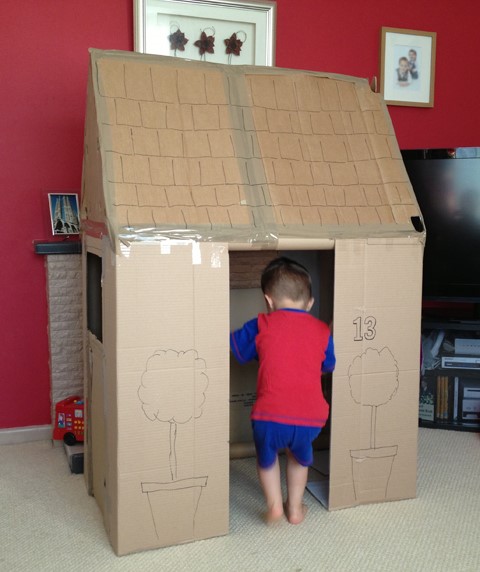Don’t toss it, reuse it: Making treasure from trash in early education by Erica Woloszynski
After seeing the alarming recent report on climate change, we all want to do more to reduce waste—and those of us working with kids have an incredible opportunity to do so. Here are a couple general ways to use materials we would otherwise toss: use them representatively in dramatic play, incorporate them as open-ended materials into other areas, or use them to create something else. I’m sure most teachers who have been in the field a while have come across some of these, but we can all use reminders that sometimes the best materials are ones we already have.
One great way to combine both parent/caregiver involvement and reuse of materials is through asking for donations of their containers(boxes, jars, etc). In the past myself and other teachers have put out bins where parents can leave their *CLEAN* containers, along with a brief explanation of the predicted activities we may do with them. For instance, we used cereal and snack boxes along with fruit containers filled with colored tissue paper in the dramatic play area. This allowed them to much more easily connect their experiences with food at home/in the community to their shopping and cooking play; the objects they were using were an exact visual match to those they had seen adults use.
Similar materials can be used easily to mix up sensory play: sanitized yogurt pint containers, apple sauce cups, and plastic lids with holes poked through can be easily mixed with most materials used in sensory tables to vary the motor movements and types of measurement kids engage in. Containers can easily be used for art, for sorting/matching, gardening, building, general exploration and toys.
Other pieces, like lids, can also be used for comparison(plastic vs metal lids in water allows for experimentation in what will float) matching (different shapes and sizes to different bottles—plus cause and effect for if materials flow out with an improperly sized lid) or written on and used for something else entirely. They can easily be used for stamping, painting or with playdough. Materials can also be used to create something else:
With all of these ideas, keep in mind they can be scaled for use with infants through preschoolers. If you work with the younger set, or a population that tends to mouth materials, I strongly recommend getting a choke testing tube for your classroom if you don’t already have one(they allow you to test if an object is small enough to be a choking hazard, link to an example on Amazon https://www.amazon.com/Safety-Small-Object-Choking-Tester/dp/B0062TNEOC ) to check if your materials are safe for them to use. If you use any sensory bottles with the same type of group, make sure they cannot be opened(taped or glued shut) so those with fine motor strength and coordination can’t open them. If you use any easily torn paper materials, put out a more limited amount at a time so you can keep track of it(and how much has gone into their mouths!).
Working with the older toddlers and preschoolers, who are developing a sense of personal ownership and learning to share, a particularly helpful part of using recycling is that it is much easier to get enough of something for everyone to have their own. This can cut down on classroom conflicts, allow children to personalize something that is “theirs”(particularly useful with paper towel rolls because we all know those kids are putting them on/in their mouths at some point), and make it easier to have the entire class engaged in something at the same time. For example, we often did not have enough magnifying glasses or buckets for each kid in a preschool room to have their own on a nature walk, but we were able to get enough “binoculars” and paper bags for everyone. Not having to stop and constantly enforce sharing of materials meant the entire time went to really exploring outside.
And with the oldest preschoolers, recycled materials can be front and center in much of their play because they are capable of so much creative representation. Simply baiting your tables with a mix of recyclables and toys/typical classroom
If all of us working with young children try to reuse instead of buy new materials, we can make a measurable impact on how much waste we create. Discussing this with your students can be really productive: helping them understand that just because something has fulfilled its original purpose doesn’t mean it has to be trash, and being creative with these materials is just as important for the environment as recycling, can lead to ecologically responsible habits in the next generation of citizens.
Paper towel tubes for pretend binoculars/telescopes and building in general






